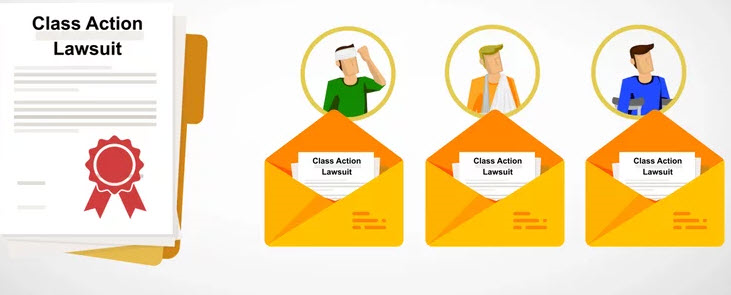Recognizing Course Activity Claim: An Overview for Attorney
Course activity lawsuits have become an important component of the legal landscape, enabling for the combination of several insurance claims into a single activity. For lawyers, understanding the complexities of class activity lawsuits is vital in properly representing their customers. This extensive guide discovers the principles of class action legal actions, from determining prospective class members to browsing the qualification procedure. In addition, it explores essential strategies for managing course action litigation and gives insights into bargaining and getting authorization for settlements. By delving right into the ins and outs of class activity suits, this guide gears up attorneys with the knowledge and tools needed to successfully browse this intricate area of regulation.
The Basics of Class Activity Lawsuits
Course activity suits are a lawful device employed to consolidate comparable claims from a group of people into a solitary claim, giving a cost-efficient and effective strategy to looking for justice and resolution. This type of suit enables a depictive plaintiff, acting on behalf of the whole course, to bring a claim against an offender who has purportedly created harm or broke the legal rights of several individuals.
The standard requirements for bringing a class action suit include numerosity, commonness, typicality, and competence of representation. Numerosity refers to the fact that the course need to be so large that joinder of all participants would be unwise. Commonness suggests that there have to be typical inquiries of legislation or truth that are shared by all participants of the course. Typicality calls for that the claims of the representative complainant are regular of the cases of the whole course. Adequacy of representation ensures that the depictive complainant will effectively represent the rate of interests of the entire class.
Class activity lawsuits can be useful for both defendants and complainants. For defendants, it provides the opportunity to efficiently settle several cases in a single legal action, preventing the demand to defend against many specific legal actions.
Identifying and Assessing Possible Course Participants
After establishing the fundamental requirements for a course activity lawsuit, the next step is to identify and analyze prospective course participants. If they fulfill the required standards., this procedure entails determining who may be part of the course and reviewing their cases to determine.
To identify possible class members, attorneys commonly perform extensive research study and collect pertinent information. This may involve examining papers, carrying out meetings, and taking a look at documents to identify individuals or entities that might have been influenced by the claimed misbehavior. It is essential to establish a clear and extensive list of potential course participants to ensure that all influenced events are consisted of in the claim.
Once possible class members have actually been recognized, the following step is to analyze their insurance claims. If they meet the lawful requirements for class certification, this entails assessing the merits of each private claim to determine. Legal representatives should carefully examine the facts, evidence, and lawful theories of each possible class participant's insurance claim to make sure that they have a practical instance.
Assessing prospective course participants also entails determining whether they satisfy the course definition and have suffered similar injury as an outcome of the offender's actions. This calls for contrasting the facts and scenarios of each possible class member's scenario to the claims and legal theories placed forth in the lawsuit.
Browsing the Class Certification Process
To successfully navigate the class qualification procedure, legal representatives must faithfully stick to the procedural requirements established forth by the court. Course qualification is an important action in a class action claim, as it figures out whether a case can proceed as a class action, representing a team of individuals who have similar claims against an accused. The procedure includes satisfying certain criteria, such as numerosity, commonality, typicality, and adequacy of depiction.
First of all, legal representatives need to establish numerosity by showing that the course is so large that private joinder is impractical. This requires a thorough analysis of the claims and defenses entailed.
Following, lawyers have to reveal typicality, which implies that the representative complainant's insurance claims are typical of the cases of the course members. This guarantees that the rate of interests of the depictive plaintiff align with the passions of the course. Lawyers must demonstrate adequacy of depiction, indicating that the depictive plaintiff and their advise will relatively and sufficiently stand for the interests of the class.
To browse this procedure successfully, legal representatives must completely prepare by performing substantial research study, collecting evidence, and establishing an engaging debate that satisfies each of these criteria. They should likewise be prepared to react to any kind of arguments or obstacles raised by the accused. By carefully sticking to the step-by-step demands stated by the court, lawyers can enhance their possibilities of acquiring class accreditation and progressing the rate of interests of the course members.

Key Approaches for Handling Course Action Litigation
Upon effectively browsing the course certification click this link process, lawyers should after that implement crucial approaches for effectively handling course activity litigation. These techniques are important to guarantee that the instance continues smoothly and efficiently, inevitably taking full advantage of the chances of a positive end result for the course members.
One key strategy is to develop a cohesive and strong legal group (Class action lawsuit). This involves setting up a team of lawyers with proficiency in class action lawsuits, along with various other pertinent locations such as the details market or topic entailed in the instance. A versatile group can bring different perspectives and abilities to the table, improving the total performance of the lawsuits
Another important strategy is to develop a extensive and well-thought-out lawsuits strategy. This plan should lay out the overall objectives of the instance, along with the certain lawful concepts and debates that will certainly be gone after. It should additionally consist of a timeline and budget plan to guarantee that the case remains on track and within the assigned resources.
Additionally, attorneys should proactively involve with the class members throughout the lawsuits procedure (Class action lawsuit). This consists of offering regular updates on the progression of the situation, seeking input and feedback from the course members, and addressing any kind of questions or issues they might have. By promoting open interaction and cooperation, attorneys can build depend on and support amongst the class participants, which can be critical in achieving an effective resolution
Clearing Up Course Action Claims: Settlement and Authorization
When it comes to resolving class activity claims, reliable arrangement and acquiring authorization are important actions in accomplishing a resolution. Course action legal actions are complex and include a lot of complainants, making it important to get to a settlement that is sufficient and fair to all celebrations entailed.

Once a settlement agreement is reached, it needs to be accepted by the court. The court's duty in this procedure is to ensure that the settlement is fair, affordable, and properly safeguards the my blog rate of interests of the course participants. The court will think about aspects such as the nature of the cases, the toughness of the proof, the possible healing for the class members, and any objections raised by class participants.
Obtaining court authorization is essential as it offers finality to the settlement and safeguards the interests of the class participants. It makes certain that the negotiation is binding and enforceable, and course members can get their rightful you can try here payment.
Final Thought

Course action lawsuits have actually become an integral component of the lawful landscape, allowing for the consolidation of numerous insurance claims right into a solitary action. Course accreditation is a crucial action in a class action legal action, as it figures out whether a case can proceed as a course action, standing for a team of people who have comparable claims versus a defendant. By diligently sticking to the procedural demands set forth by the court, legal representatives can enhance their possibilities of obtaining class qualification and advancing the rate of interests of the course members.
The court will think about variables such as the nature of the claims, the stamina of the proof, the potential healing for the course members, and any kind of arguments raised by class participants.
By recognizing and evaluating possible class participants, lawyers can identify the feasibility of a course action suit.